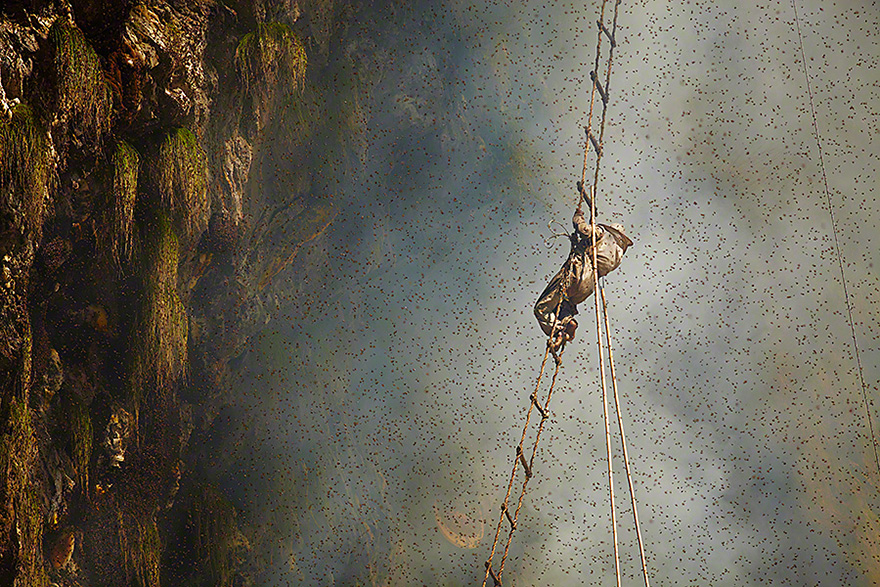I was sure I’d posted on this topic before, but a search is yielding no joy, so here goes nuthin’. I first ran across ‘mad honey;’, aka deli bal in Turkey, while reading about Apis dorsata laboriosa – the Himalayan giant honeybee. A few years ago Andrew Newey’s photographs of Gurung honey hunters were everywhere on the internet.
Below is a video from NatGeo of folks from a different group, the Kulung, harvesting honey. I especially like this for two reasons: it’s a 360 degree shot and it breaks the outdoor videographer’s 4th wall – there is a photographer in frame, roped up. I encourage you to watch it full screen and pan liberally.
Many of the posts on the photos noted that springtime honey is psychoactive. It’s because the bees are visiting rhododendrons, and rhododendrons produce grayanotoxins.
Physical symptoms from grayanotoxin poisoning appear after a dose-dependent latent period of several minutes to approximately three hours. The most common clinical symptoms include various cardiovascular effects, nausea and vomiting, and a change in consciousness. The cardiovascular effects may include hypotension (low blood pressure) and various cardiac rhythm disorders such as sinus bradycardia (slow regular heart rhythm), bradyarrhythmia (slow irregular heart rhythm) and partial or complete atrioventricular block.*
Note the mention of low blood pressure. One of mad honey’s uses, at least in Turkey, is to enhance sexual performance. Oh, yes. Turkey… Nepal is one place with rhododendron forests
and the Black Sea coast of Turkey, where Rhododendron ponticum grows, is another. There’s also a very interesting falconry tradition in that area, but that’s for another day.
Why a mad honey post now? I’m re-reading Gore Vidal’s Creation and his narrator, Cyrus Spitama (grandson of Zoroaster), tosses off an offhand comment referencing it.
Mr. Vidal is way more well-read than I, but this reference isn’t a deep dive; there are many classical accounts of mad honey poisoning. My favorite is Xenophon, because it is from the Anabasis, a rippin’ yarn in its own right and the story that The Warriors is based on.
After accomplishing the ascent the Greeks took up quarters in numerous villages, which contained provisions in abundance. Now for the most part there was nothing here which they really found strange; but the swarms of bees in the neighbourhood were numerous, and the soldiers who ate of the honey all went off their heads, and suffered from vomiting and diarrhoea, and not one of them could stand up, but those who had eaten a little were like people exceedingly drunk, while those who had eaten a great deal seemed like crazy, or even, in some cases, dying men. So they lay there in great numbers as though the army had suffered a defeat, and great despondency prevailed. On the next day, however, no one had died, and at approximately the same hour as they had eaten the honey they began to come to their senses; and on the third or fourth day they got up, as if from a drugging. *
I’ll end with a picture of a walk I took with friends almost exactly a year ago from Van Cortland Park to Coney Island, hitting many of the shooting locations that the movie iteration of The Warriors used.
Thálatta! Thálatta!


